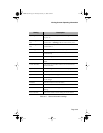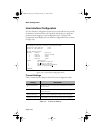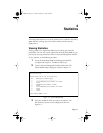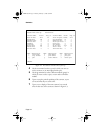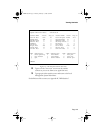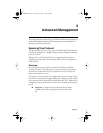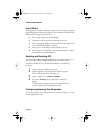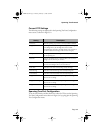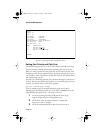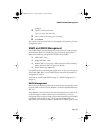
Page 5-1
5
Advanced Management
This chapter describes advanced topics for SNMP and RMON management of
the IntraChassis 9000, Multicast Traffic Management, and configuration of
Spanning Tree Protocol parameters.
Spanning Tree Protocol
The Spanning Tree Protocol (STP) is a part of the IEEE 802.1D standard that
provides for redundancy in a bridged LAN by allowing multiple links between
points in the LAN.
Without the use of STP, multiple links in a bridged network will result in
bridging loops, which allow excess broadcast traffic which can bring down an
entire network.
Overview
The spanning tree protocol reduces a network with multiple, redundant
connections to one in which all points are connected (the protocol spans the
network), but in which there is only one path between any two points (the
paths are branched, as in a tree).
For example, in a large network with multiple paths, the same message will get
broadcast over the network through multiple paths, resulting in a great amount
of extra network traffic, and possibly, network downtime. This “closed path” or
“bridged loop” among the networks can also start an unending packet-passing
process.
▲ Important: To explain STP more effectively, the IntraChas-
sis 9000 is described as a bridge for this section of the man-
ual.
GLXY9.book Page 1 Thursday, February 17, 2000 3:04 PM



